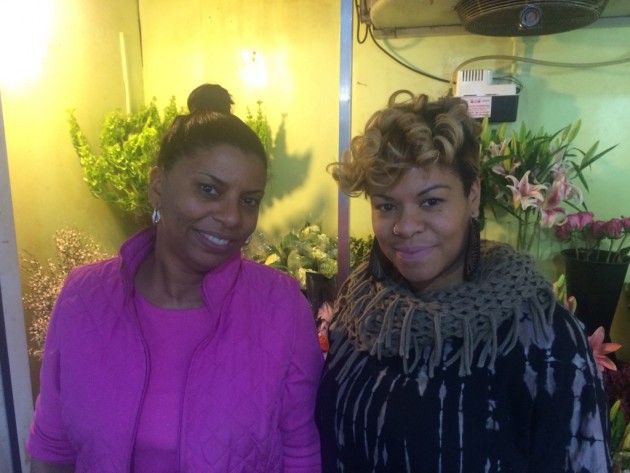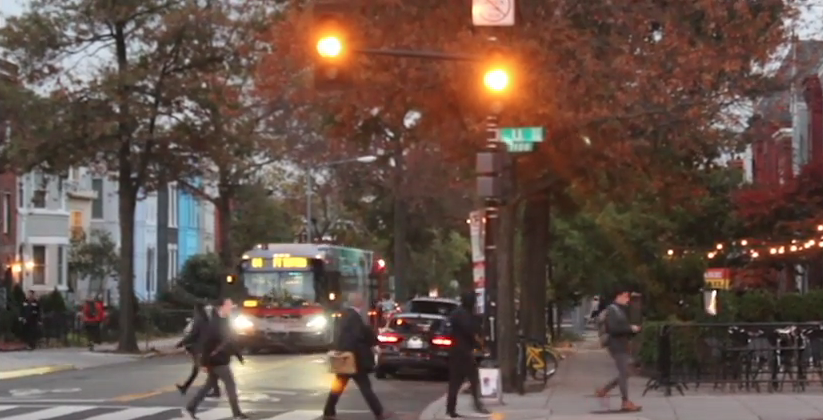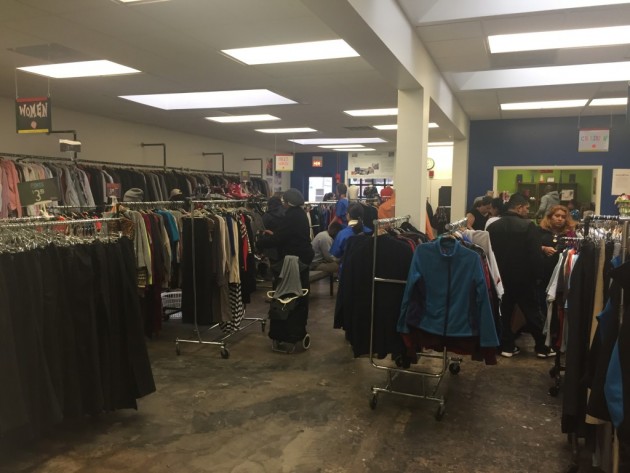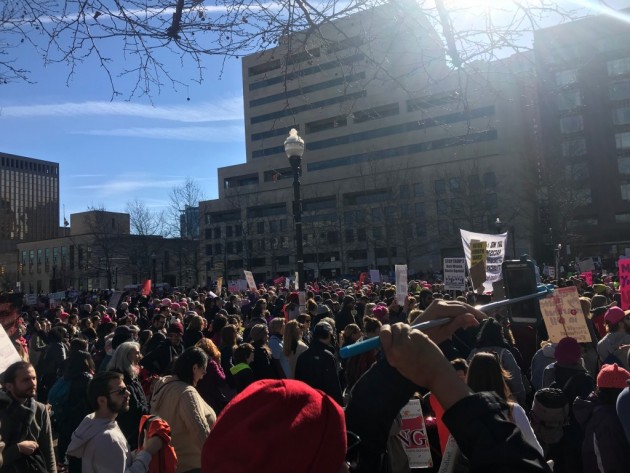
Stacie Lee Banks, left, and Kristie Lee, third generation owners of Lee's Flower & Card Shop say gentrification has been good for business."
WASHINGTON — It is a busy time for Lee’s Flower and Card Shop.
It’s February, just days before Valentine’s Day, the celebration of love when Americans spend $1.9 billion on flowers and 64 percent of men and 36 percent of women will give flowers to a significant other. And things are humming.
The staff in the shop, located on U Street and 11th Avenue in northwest Washington, is swamped as workers rush back and forth to fill orders for weddings, Valentine’s Day and other events.
Two blocks away on the corner of U Street and Georgia Avenue, workers at Johnnie’s Florist, another black-owned floral shop in the Shaw neighborhood, are just as hurried. Business is good.
And this year, business is better than it has been in a long time as the flood of new residents into the neighborhood, most of them white, have had the cash registers at both florists ringing like never before.
“In the past five years, we have seen business grow tremendously,” said Stacie Lee Banks, a third-generation owner the store that her grandparents started in 1945. “People want fresh flowers for their home, for dinner parties, for dates.
“Because the people of the neighborhood are changing, you have those with eclectic interest. There are more and more people into plants, herbs and flowers. They have a passion for these things. So they don’t mind spending.”
Johnnie Harris, owner of Johnnie’s Florist, echoed those sentiments.
“We have clients all over the D.C. metro area,” Harris said, “but the new boom in the neighborhood has definitely been a plus.”
In the past five years, U Street and Georgia Avenue have undergone tremendous change as new residents, most of them white, have moved in, and some African-American residents have been forced out and some black-owned business have lost business and closed.
Expensive condos, renovated homes and businesses, trendy bars, restaurants and lounges have changed the landscape and demographics of the area. Some long-time residents have sold their homes at a profit and moved to the suburbs or to retirement communities. Others, however, have been forced out by climbing rents or new constructed high-end housing.
While gentrification has been bad for some, it has been good for Lee’s and Johnnie’s.
“Gentrification has had no effect on my business in a negative way,” said Harris, who has been in business for 20 years. “We have profited for there being changes around the area.”
Lee’s has seen profits double over the past five years, said Lee Banks, a business graduate of nearby Howard University who started in the store at age 12. Now, she said, she wants to solidify business with the shop’s new customers.
“Business is booming,” she said. “At one point, the majority of our customers were half and half, and now it’s mostly white. There is nothing wrong with it. We accommodate our customers and business is better than ever before.”
Even though profits are soaring and business is doing well, Lee Banks said she does have some regrets.
“Although I love the new business and customers we receive, it has been bittersweet,” she said, “sweet for us and the business, but bitter for the people of the community who have lost their homes.”











